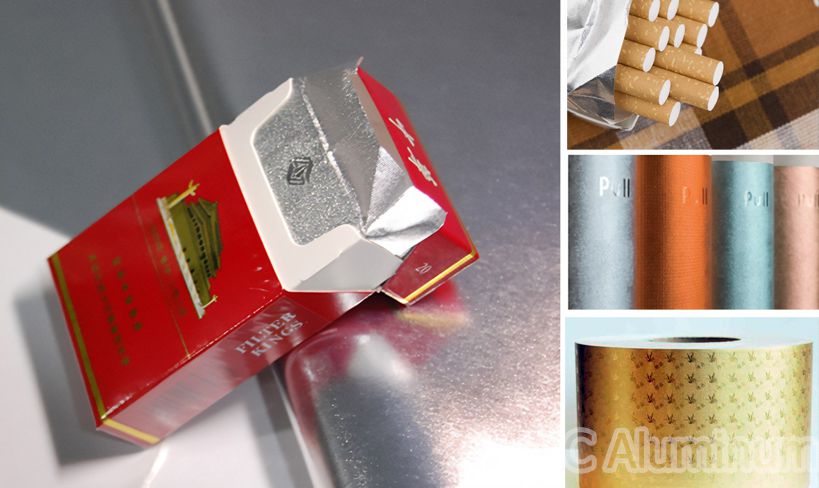Aluminum foil is widely used in the production of cigarette lining paper and candy inner packaging paper because of its non-toxic and tasteless, light-shielding, heat-insulating, anti-corrosive, and high moisture-proof characteristics. It can be made into cigarette lining paper and chocolate, chewing gum and other candy inner packaging paper through composite paper, coloring, embossing, laser, printing and other processes.
Cigarette aluminum foil is mainly used as the inner lining paper of cigarette boxes after being composited with paper. The aluminum foil used as cigarette lining paper mainly includes calendered aluminum foil and aluminized paper. The surface of cigarette foil is smooth and traceless, the plate shape is flat, there are few pinholes, and the cost is relatively low, and the chemical properties are relatively stable. The commonly used aluminum foil alloys for cigarette packaging include 8011 and 1235. , thickness is basically 0.0063-0.0065mm.
Cigarette aluminum foil specifications:
| Alloy | 1235/8011/8079 |
| Temper | O |
| Thickness | 0.006-0.0065mm |
| Width | 20-1850mm |
| Length | 10-16000mm |
| Certificate | ISO9001 SGS BV |

Characteristics of cigarette packaging aluminum foil:
1. Good barrier properties: effectively block moisture, oxygen and ultraviolet rays, keep cigarettes fresh and fragrant.
2. Moisture-proof and waterproof: prevent moisture penetration, keep cigarettes dry, and extend shelf life.
3. Anti-static: avoid damage to cigarettes caused by static electricity, especially in dry environments.
4. Aesthetics: high gloss surface can be printed in color to enhance the grade and attractiveness of cigarettes.
5. Softness: easy to fold and pack, ensuring that the packaging fits the shape of cigarettes tightly.
6. Non-toxic and harmless: After special treatment, it meets food-grade standards and does not affect the quality of cigarettes.
7. Easy to process: It can be compounded with other materials to meet diverse packaging needs.
Cigarette foil appearance quality requirements
1. The surface of the aluminum foil is flat and clean, and no defects such as corrosion, roller marks, abrasions, scratches, oil spots, bumps, wrinkles and obvious color differences that affect use are allowed.
2. The end face should be flat, the edge should be smooth, there should be no burrs, no sliding between layers and no tube core coming out.
3. Strictly control the diameter and number of pinholes to prevent the infiltration of moisture and air and ensure good barrier properties.
